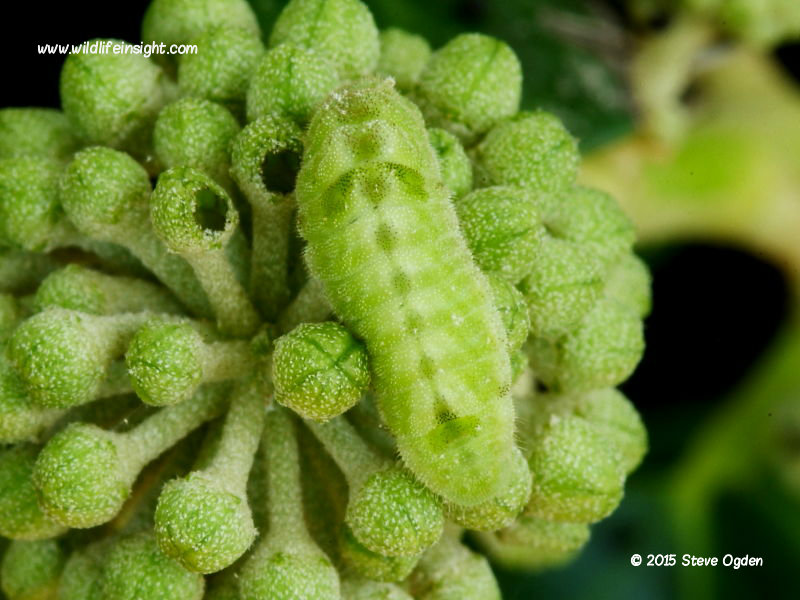Description of Ivy (Hedera helix)
Flowering from September to November, Ivy (Hedera helix) is native and common throughout the British Isles.
It is the only member of the Ivies family (Araliaceae).
Ivy is one of only a few native evergreen plants in Britain.
It’s a woody, fast-growing climber that can climb as high as 30 metres up trees, hedgebanks, rocks and walls.
It also spreads to form a carpet on woodland floors.
Stems
The climbing stem has sucker-like adhesive roots that enable the plant to cling to surfaces and into crevices.
The young twigs have downy, branched hairs.
Leaves
The leaves are glabrous (without hairs), alternate and simple. The leaves on the climbing and creeping stems are 4-10cm, palmate with 3-5 triangular lobes.
The leaves on the flowering stems are entire (untoothed) and ovate.
The leaves are a glossy dark green with paler veins above and the underside has whitish hairs. Some people can be allergic to contact with Ivy leaves.
Flowers
Ivy flowers are small and found in umbels (an inflorescence where the stalk of each flower rise from the same point) on shoots in good light, often near the top of a hedge or wall.
The flowers are small and regular (symmetrical) and the calyx has 5 small teeth.
There are 5 yellow-green petals of 3-4mm in length and 5 yellow stamens.
From a distance a bank of dark green Ivy can appear pale yellow-green for a short time when it’s in flower.
Fruit
The fruit of Ivy is a black globular berry 6-8mm across.
They ripen in late winter and are an excellent food for birds. The seeds in the berry are then spread by the birds.
Ivy berries are poisonous to humans.
Ivy (Hedera helix) as a source of nectar
When an Ivy plant is in flower on a bright, sunny day there is often a buzz coming from the whole plant as it attracts many nectaring insects such as bees, wasps, flies and hoverflies. Butterflies such as the Red Admiral (Vanessa atalanta) can turn up in numbers to nectar on Ivy in the autumn.
Ivy is a valuable foodsource as it is a common plant with flowers very rich in nectar. It’s flowering period is also late in the year when many other plants have stopped flowering and have gone to seed or died.
There is a mining bee that is fairly new to Britain, first recorded in 2001, that feeds mainly on the pollen of Ivy called the Ivy Bee (Colletes hederae).
It emerges in September and is on the wing until November, coinciding directly with the flowering period of Ivy.
The Ivy Bee in the image was nectaring in the sunshine in late September in Cornwall.
Ivy (Hedera helix) as a caterpillar foodplant
The caterpillars of quite a few moths are know to feed on different parts of the Ivy plant.
For example, the Yellow-barred Brindle (Acasis viretata) feeds on the flowers, fruit and leaves, the Small Angleshades (Euplexia lucipara) feeds on the buds, the Fan-foot (Zanclognatha tarsipennalis) feeds on the dead leaves and the Rosy Rustic (Hydraecia micacea) and Rosy Minior (Mesoligia literosa) both feed inside the stem and roots!
The Holly Blue (Celastrina argiolus) butterfly lays the eggs of its second generation on Ivy and the caterpillars feed on the buds, flowers and stem.
The image above shows the Holly Blue caterpillar on the buds of Ivy in autumn in Cornwall.
Similar flowers to Ivy (Hedera helix)
A subspecies Atlantic Ivy (Hedera helix ssp hibernica) is very similar to Ivy (Hedera helix) and is difficult to separate without examining the branched hairs on the twigs.
Atlantic Ivy likes the same habitats as Ivy and is the more common plant in West Britain.


